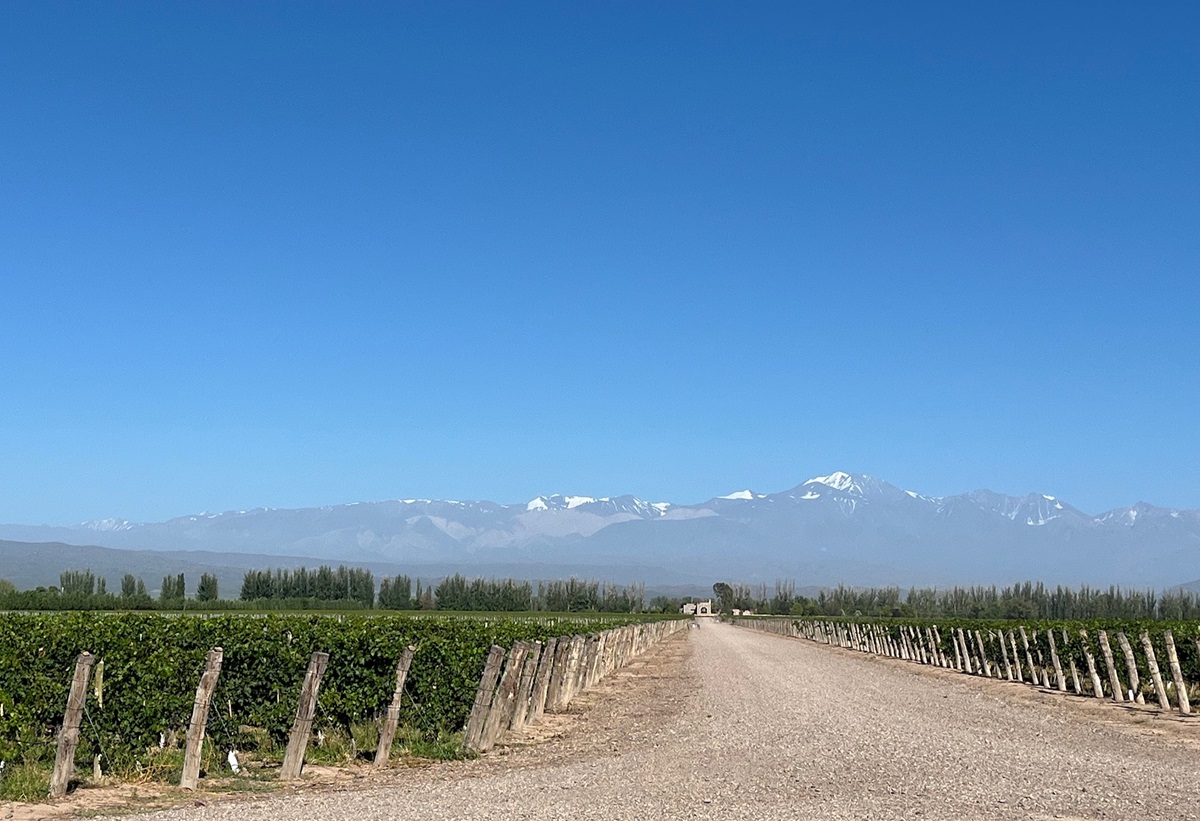LAGREIN GRAPE TASTE TEST
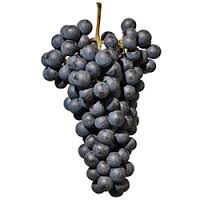
By Rose Murray Brown MW Published in The Scotsman 2 July 2016
Crunchy black cherry fruits, lashings of pepper and spice with bitter coffee and iodine notes. This is a typical tasting note of the red Lagrein grape, which is often best enjoyed after a brief chill in the fridge.
The idea of serving a red wine very slightly chilled might sound odd, but at a slightly cooler temperature this unusual north-east Italian red variety can make a deliciously refreshing fruity summer quaffer. A lightly chilled glassful is at its very best served alongside the local Alto Adige charcuterie, the slightly smoked juniper-scented cured Speck Ham (currently available from Valvona & Crolla in Edinburgh).
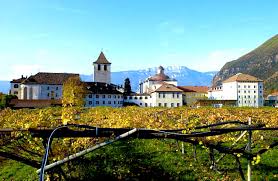 In the old days you had to have a masochistic streak to enjoy Lagrein – with or without food. Today, thanks to passionate artisanal winemakers in Alto Adige (pictured right) like Georg Ramoser and Joseph Hofstatter, who have taken this grape to heart – what little there is planted of the grape (just 412 hectares in Sudtirol), is now being planted in warmer sites to get riper fruit and made into much more consumer-friendly styles.
In the old days you had to have a masochistic streak to enjoy Lagrein – with or without food. Today, thanks to passionate artisanal winemakers in Alto Adige (pictured right) like Georg Ramoser and Joseph Hofstatter, who have taken this grape to heart – what little there is planted of the grape (just 412 hectares in Sudtirol), is now being planted in warmer sites to get riper fruit and made into much more consumer-friendly styles.
If you are a fan of Syrah or Pinot Noir, you might be interested to learn that this native Italian grape is very well-connected. According to Swiss grape geneticist Jose Vouillamoz’s recent DNA research: “Lagrein is a cousin of Syrah, grandchild of Pinot Noir, sister to Marzemino – and one of its parents is definitely Teroldego”, states Vouillamoz.
 Personally, I feel it has a lot more in common with Rhone Syrah or even California’s Petite Sirah than any Pinot. It has a deep dense ruby colour like Syrah, scents of pencil shavings, violets, tobacco and plums with a charming rustic purity, not unlike a Loire Cabernet Franc. Some examples have the similar plummy fruits you find in local grape Teroldego – and a soft tannic sweetness you find in German reds like Dornfelder.
Personally, I feel it has a lot more in common with Rhone Syrah or even California’s Petite Sirah than any Pinot. It has a deep dense ruby colour like Syrah, scents of pencil shavings, violets, tobacco and plums with a charming rustic purity, not unlike a Loire Cabernet Franc. Some examples have the similar plummy fruits you find in local grape Teroldego – and a soft tannic sweetness you find in German reds like Dornfelder.
There are many hypotheses as to the origin of Lagrein, some even thought it was from Albania or Greece, but this has been disproved. First mentioned as a red wine ‘rott Lagrein’ in 1526 in northern Italy, the name may derive from Val Lagarina in Trentino.
Today the best plantings of Lagrein are on the high slopes above Bolzano up the valley in Alto Adige beneath the snow-capped Dolomites. Bolzano records some of the highest temperatures in Italy, after Palermo in Sicily, but its nights are cool retaining natural acidity in the grapes. This gives their reds a shrill mountain freshness so appealing for summer drinking.
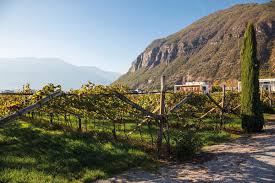 If you visit Alto Adige (pictured right), you might find several types of Lagrein. Firstly the grape can make a decent quaffing rose – called Lagrein Kretzer. The varietal red wines are labelled Lagrein or Lagrein Dunkel (darker), Lagrein Scuro or Lagrein Riserva. Some Alto Adige winemakers, like Alois Lageder, experiment by blending Lagrein with Merlot (under his Beta Delta label) with some success.
If you visit Alto Adige (pictured right), you might find several types of Lagrein. Firstly the grape can make a decent quaffing rose – called Lagrein Kretzer. The varietal red wines are labelled Lagrein or Lagrein Dunkel (darker), Lagrein Scuro or Lagrein Riserva. Some Alto Adige winemakers, like Alois Lageder, experiment by blending Lagrein with Merlot (under his Beta Delta label) with some success.
All Lagrein in our tasting were red varietals – and all from northern Italy. The grape is grown elsewhere – just 30 hectares in Paso Robles in California – and a growing band of winemakers in Keyneton in Australia’s Victoria and Mount Crawford in South Australia are experimenting with Lagrein – as well as in Marlborough and Nelson in South Island, New Zealand.
What our tasting did prove was that there are not many Lagrein on our shelves, but surprisingly we unearthed one in Lidl’s recent Easter collection (pictured above). The red Lagreins that are available are all made in very different styles – some more like sweet fruited Merlot, others like a bitter Primitivo.
LAGREIN UNDER £10
LAGREIN REATIA 2014
(£7.99 Lidl)
Prominent black cherry fruit aromas, sweet lush blackfruits on palate, soft textured sweet tannins with a hint of violet, just finishes a touch short on the finish – but a good introductory well balanced example of the grape (pictured above): 13%
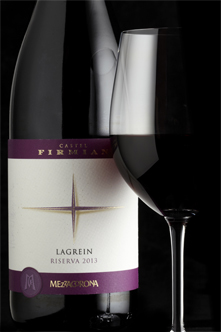 LAGREIN RISERVA, CASTEL FIRMIAN 2013 Mezzacorona ***STAR VALUE BUY***
LAGREIN RISERVA, CASTEL FIRMIAN 2013 Mezzacorona ***STAR VALUE BUY***
(£7.95 The Wine Society www.thewinesociety.com)
Dense ruby, tobacco notes, earthy, blackfruit flavours with a slightly smoky edge from ten months in oak; our tasters particularly enjoyed this Trento Lagrein from Mezzacorona co-operative for its ‘succulent fruit’ and ‘authentic rustic purity’: 13%
LAGREIN DUNKEL 2013 Bottega Vinai
(£9.89 Valvona & Crolla)
Deep colour, prominent black cherry fruits, dry, plummy with a bitter coffee and chocolate finish and hints of spice and sweet tannins; a fruit-driven style which might appeal to those who like Merlot: 13%
LAGREIN OVER £10
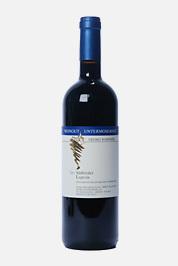 LAGREIN UNTERMOSENHOF 2014 Georg Ramoser ***STAR BUY***
LAGREIN UNTERMOSENHOF 2014 Georg Ramoser ***STAR BUY***
(£15 Les Caves de Pyrene www.lescaves.co.uk; L’Art du Vin, Dunfermline)
Looking for a Lagrein with leather and tobacco notes, sweet soft tannins, a touch herby with a hint of pencil shavings? This is a typical example of artisanal Lagrein. Made by Ramoser is a tiny organic producer with just 2.5 hectares with vines trained in the old pergola fashion as he feels it provides shade for his grapes: 13.5%
LAGREIN VIGNA STEINRAFFLER 2012 Joseph Hofstatter
(£17 The Wine Society www.thewinesociety.com)
Much more structured with high acidity and more of the classic Italian bitter twist than other Lagrein in the tasting. Tasters disliked the bitterness on the finish. Reminded me of the structure and acidity you can often find in higher priced Primitivos. This Lagrein is best served at room temperature – and requires time to aerate after opening and decanting: 13.5%
Join Rose’s Hidden Gems of Italy wine & charcuterie tasting at Abode Hotel, 129 Bath St, Glasgow Friday 30 September £42 www.rosemurraybrown.com
wine tastings
The perfect gift for the wine enthusiast in the family. Rose does In-person tastings too.
cellar advice
Rose does cellar valuations for private clients, valuations for insurers & bespoke portfolio management.
Related stories
March 31, 2024
By Rose Murray Brown MW Published in The Scotsman 30 March 2024 On 2 February 1659, the first wine made from grapes grown in South Africa was crafted by the Governor of the Cape, Jan van Riebeeck. He had planted vines four years earlier in the Company’s Garden near Cape Town from cuttings imported from France. Van Riebeeck’s first
March 24, 2024
By Rose Murray Brown MW Published in The Scotsman 16 March 2024 Heatwaves and bushfires were very much on the agenda when I visited Chile last month as winemakers prepared for their 2024 harvest in blistering heat and drought, with a plume of smoke from the devastating fires lingering over coastal hills. Heat and drought are the greatest challenges
March 23, 2024
By Rose Murray Brown MW Published in The Scotsman 9 March 2024 I have two glasses of Malbec in my hands from the same high-altitude vineyard in Uco valley in Argentina. I am in the Catena Institute of Wine in Mendoza with winemaker Agustin Silva. He has asked me to taste the two wines, both from the 1500m high



